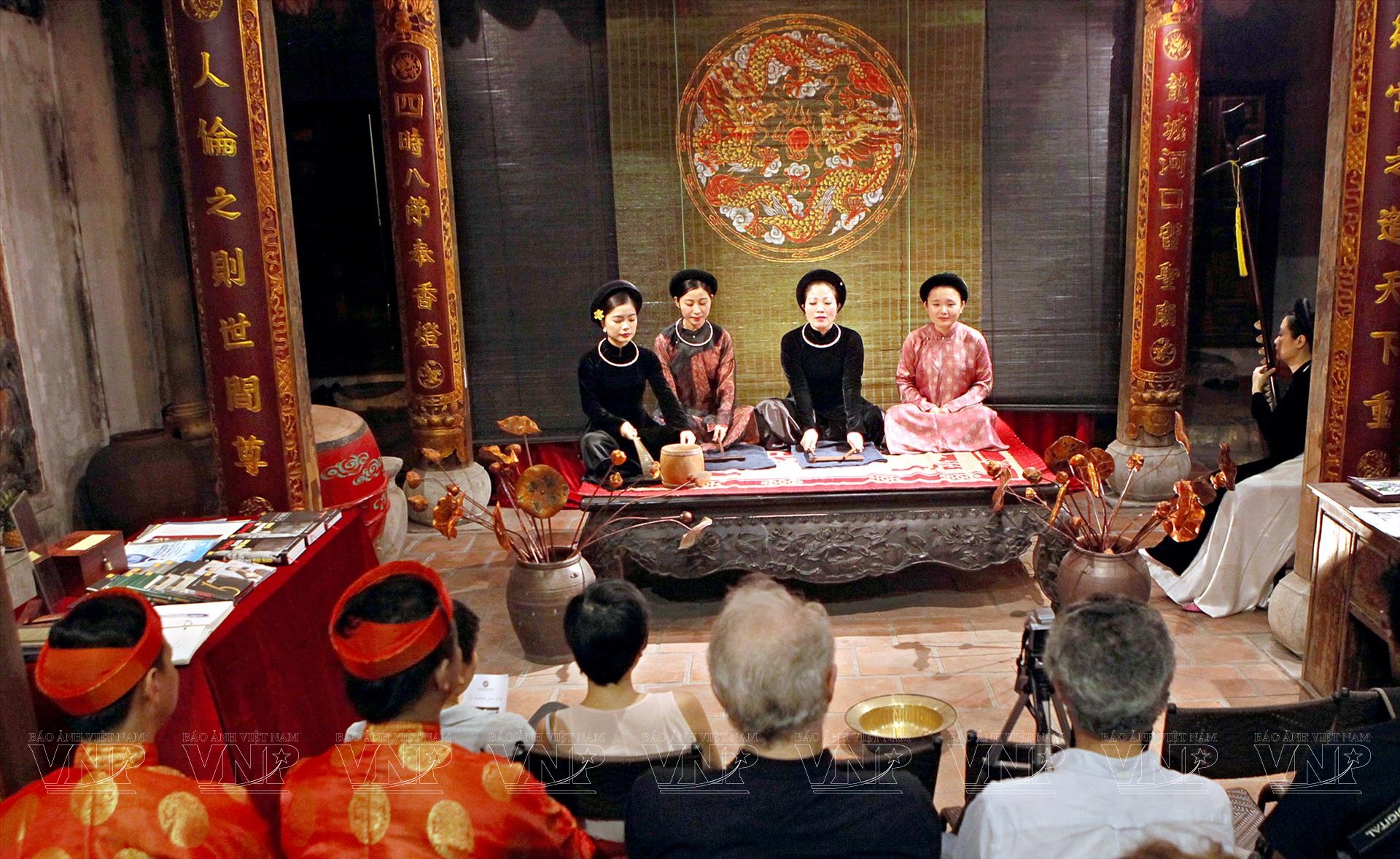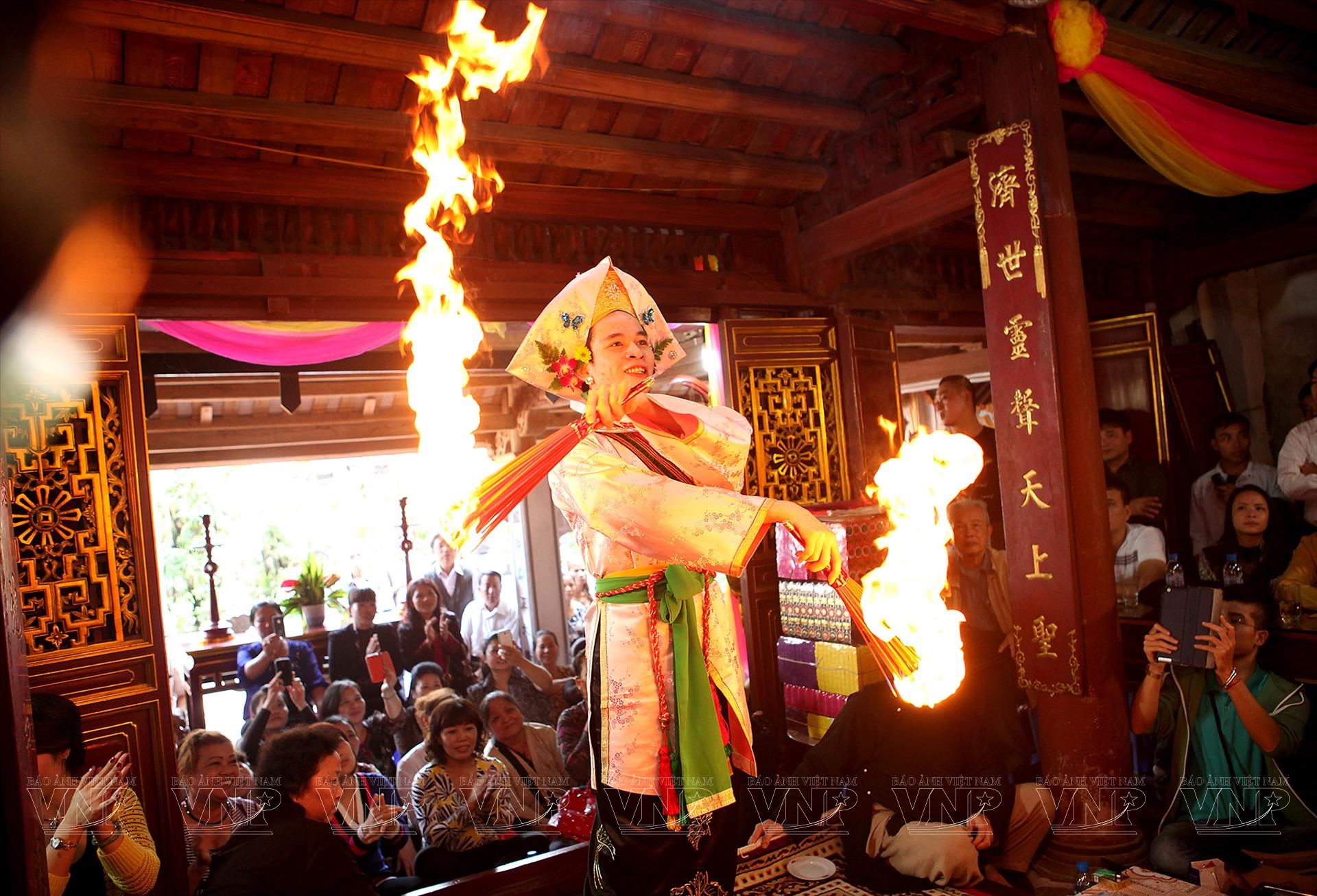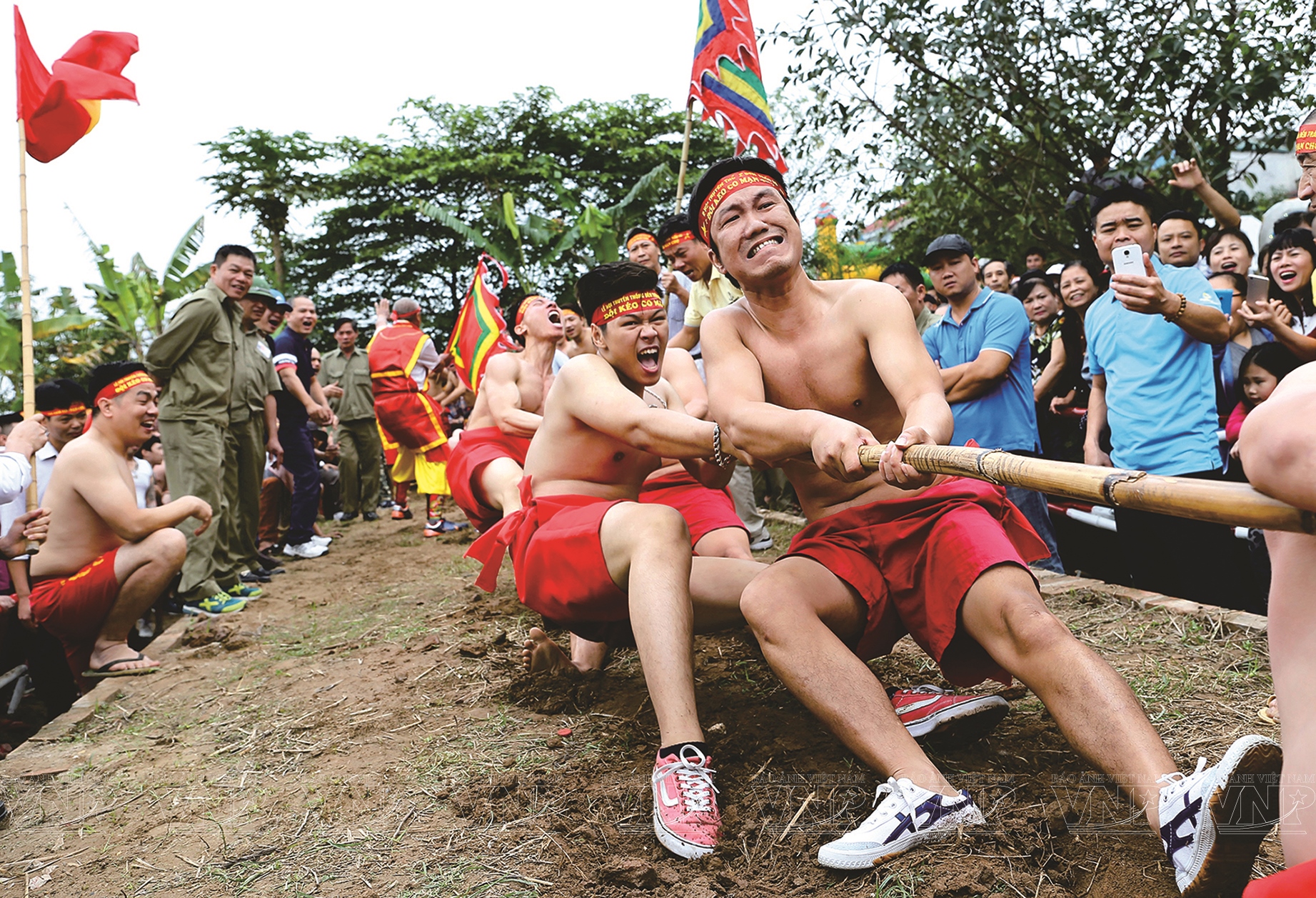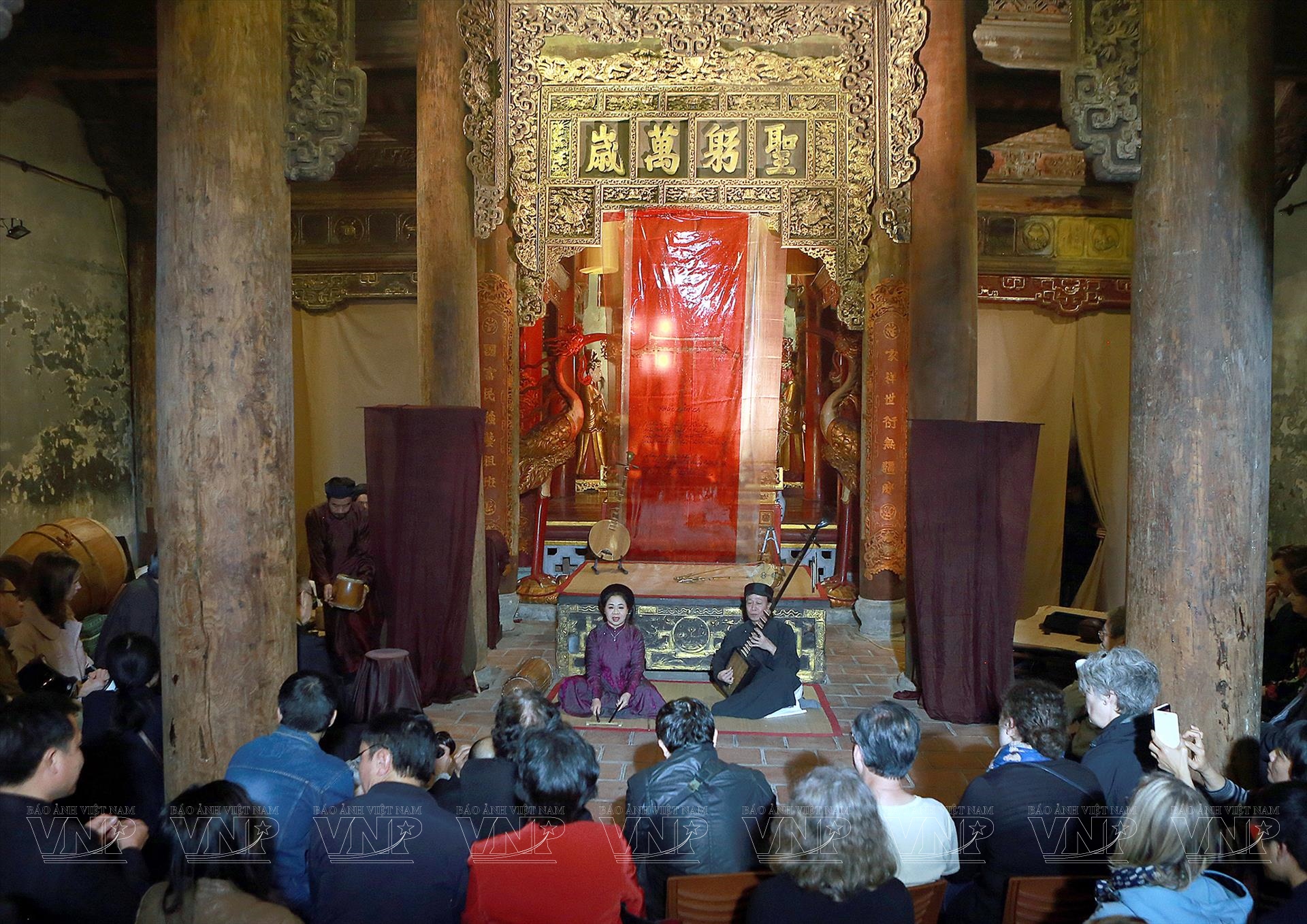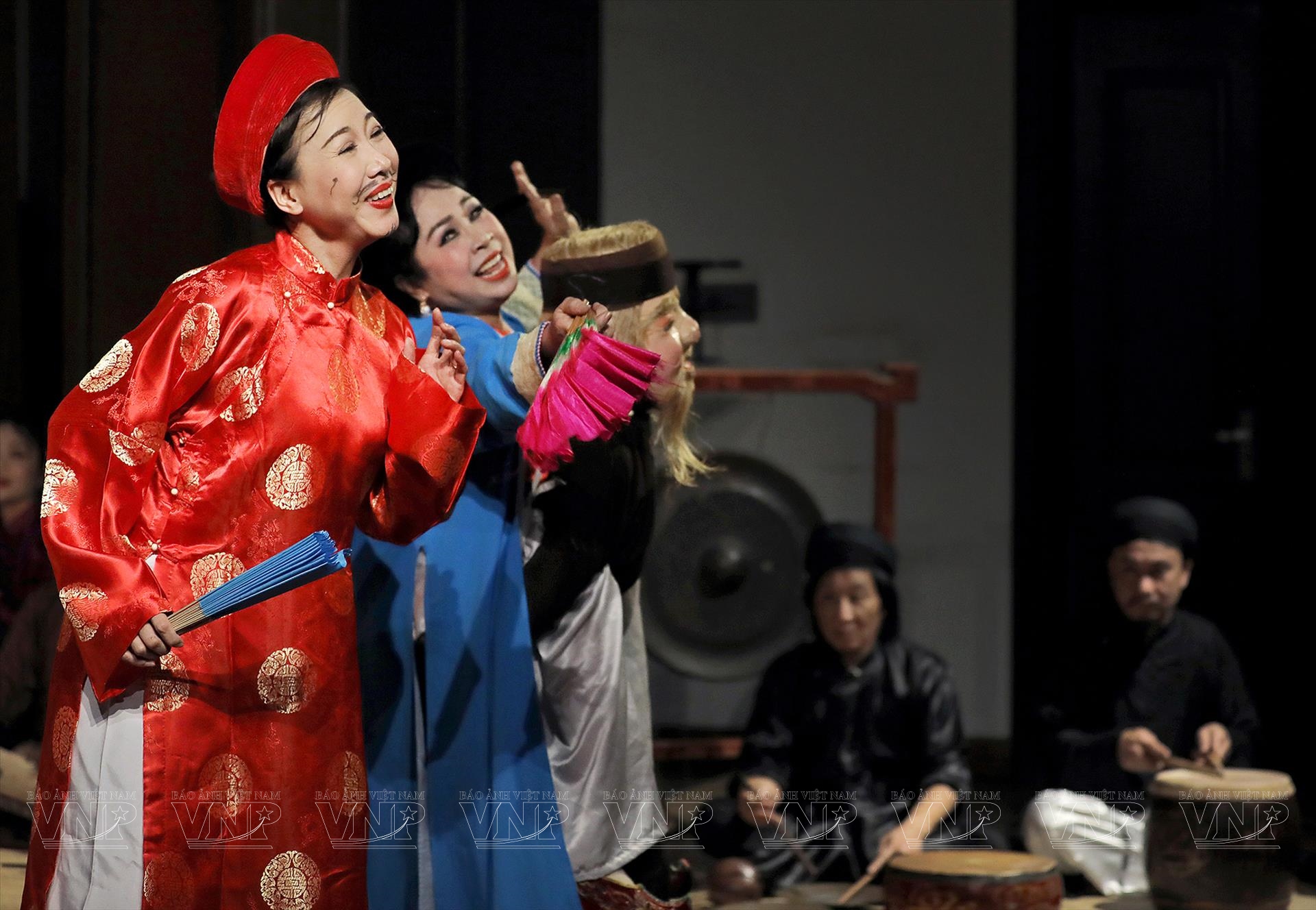Hanoi - A Treasure Trove of Heritage
With a history spanning over a thousand years, Hanoi stands as Vietnam's cultural capital, a city renowned for its heritage. The “City for Peace” has a rich tapestry of cultural heritage, meticulously woven together over thousands of years. Hanoi boasts a remarkable number of cultural heritage sites, both tangible and intangible, including historic relics, vibrant festivals, traditional villages, and UNESCO-recognized treasures.
In 2024, Hanoi commemorates the 70th anniversary of its liberation. To mark this historic occasion, the city is hosting a series of cultural events centered on iconic landmarks and heritage sites such as the Thang Long Imperial Citadel, the Temple of Literature, Hoan Kiem Lake, the Old Quarter, President Ho Chi Minh's Mausoleum, and the Hoa Lo Prison.
Accompanying these events are numerous heritage tours designed to attract both domestic and international tourists. Stella Ciorra, President of the Friends of Vietnam Heritage (FVH), who has lived in Hanoi for over 25 years, expresses her deep affection for the city, its friendly people, its tree-lined streets, and most importantly, its heritage, which reflects the history and soul of Hanoi. To share the allure of Hanoi as a destination with the world, FVH has organized approximately 40 walking tours each year, allowing international visitors to explore the city's cultural treasures.
According to Emmanuel Cerise, Director of Paris Region Expertise-Vietnam (PRX-Vietnam), an architect who has lived in the city for nearly 15 years and has contributed significantly to the restoration and preservation of French colonial villas in Hanoi, the restored French villas have helped to revive the historical, cultural, and architectural imprint of Hanoi's past. The French architectural legacy in Hanoi, such as the 49 Tran Hung Dao villa, the Hanoi Opera House, and Long Bien Bridge, reflects the close connection and similarities between French and Vietnamese cultures. “These structures are exceptional sites that need to be preserved and restored not only as historical landmarks but also as creative cultural spaces where art exhibitions, cultural tours, and community activities can take place,” said Emmanuel.
Hanoi is also a melting pot of thousands of unique and captivating cultural and folk religious festivals, including the Co Loa Festival (Dong Anh District), Huong Pagoda Festival (My Duc District), Dong Da Festival (Dong Da District), Thay Pagoda Festival (Quoc Oai District), Tay Phuong Pagoda Festival (Thach That District), Tram Gian Pagoda Festival (Chuong My District)
Hanoi is rightfully called a "city of heritage," possessing historical treasures that embody the cultural essence of the Trang An people. Among these treasures are UNESCO-recognized world heritage sites like the Thang Long Imperial Citadel, the Giong Festival, Ca tru singing, and the doctoral steles from the Le-Mac dynasties at Van Mieu - Quoc Tu Giam (the Temple of Literature - the first university of Vietnam).
Moreover, when discussing Hanoi, one cannot overlook renowned national heritage sites such as Hoan Kiem Lake, the Temple of Literature, the One Pillar Pagoda, Tran Quoc Pagoda, Quan Su Pagoda, Voi Phuc Temple, Bach Ma Temple, Quan Thanh Temple, the Turtle Tower - Ngoc Son Temple, Huong Pagoda, Tay Phuong Pagoda, Thay Pagoda, the Co Loa Citadel, and the Ho Chi Minh Mausoleum.
Significantly, Hanoi is also a melting pot of thousands of unique and captivating cultural and folk religious festivals, including the Co Loa Festival (Dong Anh District), Huong Pagoda Festival (My Duc District), Dong Da Festival (Dong Da District), Thay Pagoda Festival (Quoc Oai District), Tay Phuong Pagoda Festival (Thach That District), Tram Gian Pagoda Festival (Chuong My District); traditional folk art forms and performances such as Hang Trong paintings, Ca tru singing, Xam singing (blind wanderers' music), Hat van (spiritual singing), water puppetry, string puppetry, Cheo tau (traditional singing performed on a row boat), Hat trong quan (the art of folk singing alongside drums), Trong bong (traditional drums from Trieu Khuc Village), Ai Lao singing and dancing; famous traditional handicrafts like Van Phuc silk weaving, Ngu Xa bronze casting, Bat Trang ceramics, Ha Thai lacquerware; and a plethora of renowned dishes in Vietnamese cuisine, including com (young sticky rice) from Vong Village, Hanoi pho (noodles with beef or chicken), bun cha (rice noodles with grilled pork), bun thang (chicken vermicelli soup), bun oc (rice noodle with snail), Thanh Tri steamed rice rolls, La Vong grilled fish and Ho Tay shrimp cake.
In September 2024, at the World Travel Awards for Asia and Oceania held in the Philippines, Hanoi was proudly awarded "Vietnam's Leading Cultural Destination" and for the third time, "Asia's Leading City Destination”. These accolades highlight Hanoi's exceptional appeal, driven by the synergy and influence of its rich cultural heritage.
To leverage its existing potential and strengths for tourism development, Hanoi's Department of Tourism in 2024 is focusing on planning, investing, preserving, and restoring heritage sites, with a particular emphasis on key projects such as the Co Loa Citadel, the Thang Long Imperial Citadel, and the development of traditional villages integrated with tourism, aiming to create sustainable livelihoods for local people while promoting Hanoi's cultural values.
The development of the Old Quarter, a living museum of Thang Long - Hanoi's formation and development, is considered a priority in the capital city's economic and tourism development strategy. Therefore, significant investments have been made in promotional and tourism activities in this area, including the pedestrian street on Hoan Kiem Lake, the Old Quarter night market, tours exploring traditional medicine in Lan Ong Street, and folk art activities at the Culture and Arts Center at No.22, Hang Buom Street. These initiatives not only contribute to the preservation of the Old Quarter's architectural heritage but also safeguard and promote the cultural values, lifestyles, and traditional customs of Hanoi's people.
With its sustainable planning, long-term vision for heritage preservation, and strategic investments, Hanoi will continue to be a leading cultural tourism destination in Vietnam and the region, attracting a large number of international visitors. In 2024, as Hanoi celebrates its 70th anniversary of liberation and its 25th anniversary of being recognized by UNESCO as a "City for Peace," the capital city's tourism industry expects to welcome 27 million tourists, including 5.5 million international visitors, with estimated tourism revenue exceeding 109 trillion dong (approximately 4.46 billion US dollars) Regarding the preservation and development of Hanoi's heritage strengths, Jonathan Baker, Chief Representative of the UNESCO Office in Vietnam, emphasizes that Hanoi’s transformation depends on its cultural heritage destinations shining brightly and welcoming visitors from all corners of the world. UNESCO is committed to supporting Hanoi with solutions that balance heritage preservation with socio-economic development and improve the livelihoods of local communities near heritage sites.







